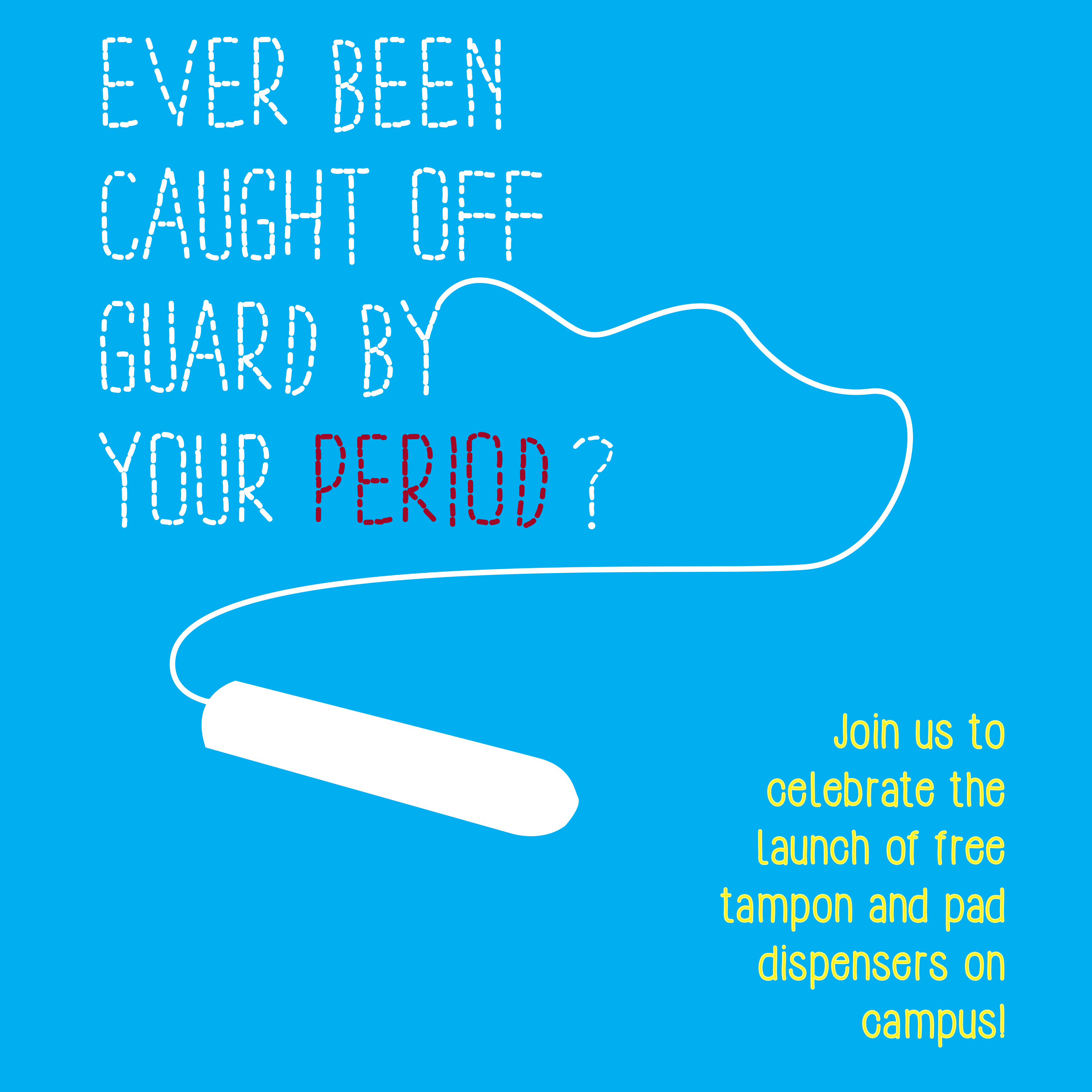On Nov. 2, students and administrators gathered in the lobby of Cro to celebrate the launch of free menstrual health products in select bathrooms on campus. The pilot program, spearheaded by Emma Horst-Martz ’18, was implemented in collaboration with SGA, the administration and student health services. Although nearly 86 percent of women report experiencing their period in public without easy access to needed menstrual supplies, few colleges currently provide students with free pads and tampons. If her pilot program is institutionalized, Horst-Martz noted in her speech to supporters, Conn may emerge as one of the first colleges in the U.S. to distribute menstrual products with administrative financial backing.
Horst-Martz’s involvement in issues of menstrual health on campus began during her first year. She noticed that only one of the 10 bathroom stalls on her floor in Larrabee contained a receptacle for used tampons. Students experiencing their periods, she explained in an interview with the Voice, were forced to carry their tampons to the trash. Concern regarding hygiene and the social stigma associated with menstruation can cause many to feel embarrassed transferring their tampons outside the bathroom stall for disposal. Seeking to remedy the issue, Horst-Martz approached Marco Michaud, who supervises facilities management at Conn. Michaud ultimately agreed to install the receptacles without additional funding from SGA. Today, the stalls in all dorm bathrooms include tampon receptacles.
Horst-Martz hopes that her free tampon and pad initiative will become institutionalized in a similar fashion at Conn. Inspired by the menstruation-themed Instagram posts of artist and poet Rupi Kaur, Horst-Martz seeks to de-stigmatize discussions of menstruation on campus. Working with Vice President of Administration and Finance at the College Rich Madonna, Horst-Martz crafted a resolution that would designate money from SGA’s Sustainable Project fund for her program. SGA voted unanimously to implement free dispensers of 1,000 tampons and pads in the gender-neutral bathroom on the first floor of Cro, as well as in the women’s bathrooms on the first and second floor of Cro. Since the ceremony commemorating Horst-Martz’s program, SGA has resolved to allocate $1,500 toward more tampons and tampon dispensers in the designated bathrooms. Horst-Martz is confident that, in the near future, additional tampon and pad dispensers will be placed in Blue Camel and the bathroom on the first floor of the library. To place dispensers more widely across campus, however, the Office of the Vice President must have a financial stake in the program. Horst-Martz hopes that, before she graduates, money from VP Madonna’s discretionary budget will be allocated toward additional dispensers.
Horst-Martz’s initiative coincides with more public discussions on menstruation in recent years. National Public Radio (NPR) declared 2015 “The Year of the Period.” It determined that five national news outlets used the word “menstruation” only 47 times in commentary in 2010 but 167 in 2015. Citizens across the globe, in fact, are displaying a greater awareness of the burdens menstruation imposes. Michelle Obama, speaking to members of the World Bank this year, acknowledged that an inability to afford menstrual products affects the productivity of girls in school.
The embarrassment that girls are socialized to associate with menstruation further hinders academic achievement. The United Nations has even declared menstrual hygiene to be a public health, gender-equality, and human rights issue.
Conn’s tampon and pad pilot program recognizes the financial burden of menstruation. To purchase menstrual supplies costs an average $18,171 over the length of one’s life. The sales tax imposed on sanitary products, the so-called “tampon tax” or “pink tax,” has been dismantled in only a handful of states. Most states tax tampons and pads as luxury items even though they are, in fact, necessities. Students struggling to pay for school, Horst-Martz says, may face difficulties allocating money toward necessary toiletries.
Beyond recognizing the financial burden of tampon purchases, Horst-Martz’s initiative sets a standard of inclusiveness at the college. The ubiquity of tampons and pads in Cro bathrooms normalizes menstruation and thus combats the negative social stigma associated with it. Placing products in gender-neutral restrooms across campus, the administration engages in the important task of including transgender students in the narrative. Horst-Martz confirms this view. She has sought to focus the language of the project “on menstruation rather than feminine hygiene projects” to include “people who are not women but menstruating” in the initiative. Although she would like to see tampon and pad dispensers within the men’s bathrooms on campus, Horst-Martz acknowledges that she lacks the financial resources at this point to extend the project.
Institutions with the ability to influence public policy, such as colleges, have a responsibility to combat harmful misconceptions, including the perception that menstruation products are a luxury. Connecticut College, emerging at the forefront of the movement to make menstrual products more accessible, encourages other institutions by its example to foster productive discussions about current policy. By endorsing Horst-Martz’s initiative, the administration ultimately reinforces the College’s mission of inclusion. •









